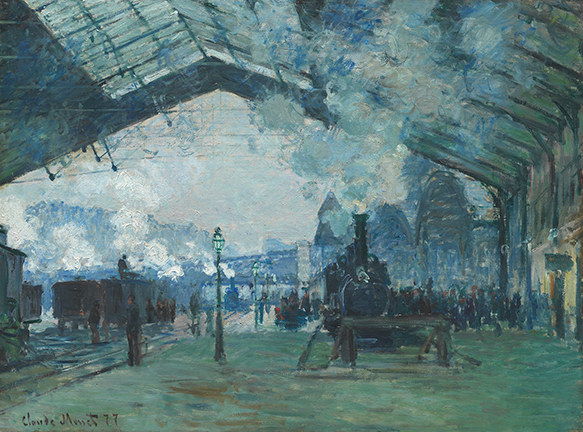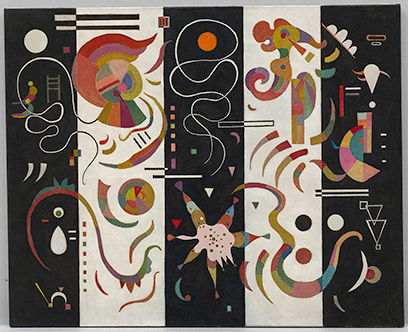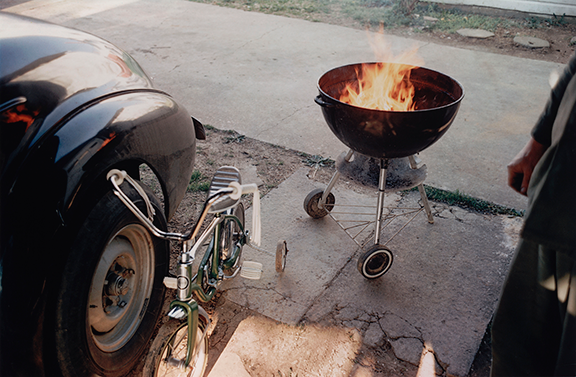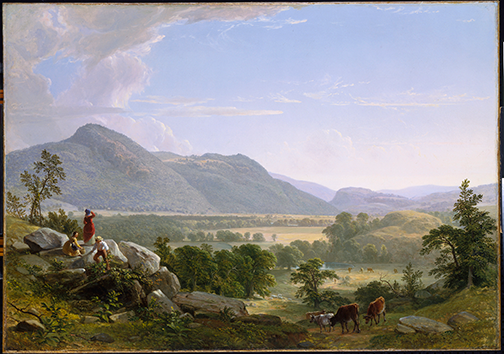Art K to 12
Test Format and Sample Questions
The Art K to 12 subject area test consists of approximately 80 multiple-choice questions. You will have two and one-half hours to complete the test.
Each question will contain four response options, and you will indicate your answer by selecting A, B, C, or D.
The table below presents types of questions on the exam and directs you to examples of these formats among the sample items that follow.
Table of Question Formats
| Type of Question | Sample Question |
|---|---|
|
Direct Question Choose the response option that best answers the question. |
Question 1 |
|
Sentence completion Select the response option that best completes the sentence. |
Question 26 |
Sample Questions
The following questions represent both the form and content of questions on the examination. These questions will acquaint you with the general format of the examination; however, these sample questions do not cover all of the competencies and skills that are tested and will only approximate the degree of examination difficulty.
Question 1
Competency 1—Knowledge of the processes of two-dimensional art
DIRECTIONS: Read the question and select the best response.
Fixative would most likely be used to preserve artworks made with which of the following media?
- Enter to expand or collapse answer.Answer expanded
- Correct Response: B.
Question 2
Competency 1—Knowledge of the processes of two-dimensional art
DIRECTIONS: Read the question and select the best response.
Use the image below to answer the question that follows.

Arrival of the Normandy Train, Gare Saint-Lazare by Claude Monet Full description is included in the credit below the following question
Which of the following terms best characterizes the way the composition is balanced?
Credit: Claude Monet, French, 1840-1926, Arrival of the Normandy Train, Gare Saint-Lazare, 1877, Oil on canvas, 23 1/2 x 31 1/2 in. (59.6 x 80.2 cm), Mr. and Mrs. Martin A. Ryerson Collection, 1933.1158, The Art Institute of Chicago.
- Enter to expand or collapse answer.Answer expanded
- Correct Response: D.
Question 3
Competency 1—Knowledge of the processes of two-dimensional art
DIRECTIONS: Read the question and select the best response.
Primarily which of the following printmaking tools is most likely to present a safety concern if not handled properly?
- Enter to expand or collapse answer.Answer expanded
- Correct Response: A.
Question 4
Competency 2—Knowledge of the processes of three-dimensional art
DIRECTIONS: Read the question and select the best response.
Which of the following tools is traditionally used in the weaving process?
- Enter to expand or collapse answer.Answer expanded
- Correct Response: C.
Question 5
Competency 2—Knowledge of the processes of three-dimensional art
DIRECTIONS: Read the question and select the best response.
Use the image below to answer the question that follows.

Funerary sculpture of a Horse, Middle Tang dynasty Full description is included in the credit below the following question
Colors used in the earthenware sculpture are best described with which of the following terms?
Credit: Unknown artist. Funerary sculpture of a Horse, Middle Tang dynasty, about 700-800, China. Los Angeles County Museum of Art, Gift of Hedwig Worch.
- Enter to expand or collapse answer.Answer expanded
- Correct Response: C.
Question 6
Competency 2—Knowledge of the processes of three-dimensional art
DIRECTIONS: Read the question and select the best response.
Which of the following measures should be taken to ensure safety when cutting a narrow piece of wood on a table saw in the process of making a sculpture or mixed media artwork?
- Enter to expand or collapse answer.Answer expanded
- Correct Response: A.
Question 7
Competency 3—Knowledge of the processes of digital arts
DIRECTIONS: Read the question and select the best response.
Dodging and burning is used in digital image editing and traditional darkroom editing to adjust primarily which of the following aspects of the image?
- Enter to expand or collapse answer.Answer expanded
- Correct Response: B.
Question 8
Competency 3—Knowledge of the processes of digital arts
DIRECTIONS: Read the question and select the best response.
Primarily which of the following types of lighting contributes to the dramatic effects of silhouettes in photographs?
- Enter to expand or collapse answer.Answer expanded
- Correct Response: C.
Question 9
Competency 3—Knowledge of the processes of digital arts
DIRECTIONS: Read the question and select the best response.
Which of the following steps is most important to conduct regularly in order to maintain a properly functioning computer?
- Enter to expand or collapse answer.Answer expanded
- Correct Response: B.
Question 10
Competency 4—Knowledge of art history and culture
DIRECTIONS: Read the question and select the best response.
Use the image below to answer the question that follows.

Striped (Rayé), November 1934. Oil with sand on canvas. Full description is included in the credit below the following question
Which artist created this painting?
- Enter to expand or collapse answer.Answer expanded
-
Correct Response: D.
Credit: Vasily Kandinsky. © 2013 Artists Rights Society (ARS), New York / ADAGP, Paris. Striped (Rayé), November 1934. Oil with sand on canvas. 31 7/8 × 39 3/8 inches (81 × 100 cm). Solomon R. Guggenheim Museum, New York. Solomon R. Guggenheim Founding Collection. 46.1022.
Question 11
Competency 4—Knowledge of art history and culture
DIRECTIONS: Read the question and select the best response.
Use the image below to answer the question that follows.

Caro, Anthony. Punch and Judy. Full description is included in the credit below the following question
The multimedia work made of wood, paper, pushpins, acrylic, chalk, and pencil was most likely influenced by which of the following styles or movements?
Credit: Caro, Anthony. Punch and Judy, 1981. Pencil, chalk, acrylic, push pins, Tycore, and paper in wood box. overall: 34 1/2 x 21 x 8 1/2" (87.63 x 53.34 x 21.59 cm.). Gift of Seymour H. Knox, Jr., 1983. Albright-Knox Art Gallery, Buffalo, NY, USA. Albright-Knox Art Gallery / Art Resource, NY. Copyright to Barford Sculptures Ltd.
- Enter to expand or collapse answer.Answer expanded
- Correct Response: C.
Question 12
Competency 4—Knowledge of art history and culture
DIRECTIONS: Read the question and select the best response.
Andy Warhol's Campbell's Soup Cans paintings were most likely a response to primarily which of the following cultural factors?
- Enter to expand or collapse answer.Answer expanded
- Correct Response: B.
Question 13
Competency 4—Knowledge of art history and culture
DIRECTIONS: Read the question and select the best response.
Mayan pyramids served primarily which of the following purposes?
- Enter to expand or collapse answer.Answer expanded
- Correct Response: B.
Question 14
Competency 5—Knowledge of art criticism processes
DIRECTIONS: Read the question and select the best response.
Käthe Kollwitz' work was inspired primarily by which of the following concepts or topics?
- Enter to expand or collapse answer.Answer expanded
- Correct Response: C.
Question 15
Competency 5—Knowledge of art criticism processes
DIRECTIONS: Read the question and select the best response.
Use the image below to answer the question that follows.

Eggleston, William. Dye transfer print, printed July 13, 1981. Full description is included in the credit below the following question
Which of the following statements most effectively and accurately analyzes the principles of design used in the photograph?
Credit: Eggleston, William (b. 1939) © Eggleston Artistic Trust. Courtesy Cheim & Read, New York. Memphis, c. 1972. Dye transfer print, printed July 13, 1981, 12 9/16 x 19 1/8" (32 x 48.9 cm). Purchased as the gift of the John E. Galvin Charitable Trust on behalf of the Crouse Family. (301.1987).
- Enter to expand or collapse answer.Answer expanded
- Correct Response: D.
Question 16
Competency 5—Knowledge of art criticism processes
DIRECTIONS: Read the question and select the best response.
Use the image below to answer the question that follows.

Durand, Asher Brown, Dover Plain, Dutchess County, New York. Full description is included in the credit below the following question
Which of the following statements about the painting most exemplifies the description stage of the critical process?
Credit: Durand, Asher Brown (1796-1886). Dover Plain, Dutchess County, New York. 1848. Oil on canvas, 42 1/2 x 60 1/2 in. (107.9 x 153.7 cm). Location: Smithsonian American Art Museum, Washington, DC, U. Photo Credit: Smithsonian American Art Museum, Washington, DC / Art Resource, NY.
- Enter to expand or collapse answer.Answer expanded
- Correct Response: C.
Question 17
Competency 5—Knowledge of art criticism processes
DIRECTIONS: Read the question and select the best response.
Which of the following aesthetic theories focuses on the elements of art and principles of design in artworks?
- Enter to expand or collapse answer.Answer expanded
- Correct Response: A.
Question 18
Competency 6—Knowledge of art education and pedagogy
DIRECTIONS: Read the question and select the best response.
Which researcher claimed that there are two major stages of human and artistic development—presymbolic and symbolic?
- Enter to expand or collapse answer.Answer expanded
- Correct Response: D.
Question 19
Competency 6—Knowledge of art education and pedagogy
DIRECTIONS: Read the question and select the best response.
Primarily which of the following theorists or art educators proposed that from birth to age 2 children experience the world through their senses and are extremely egocentric?
- Enter to expand or collapse answer.Answer expanded
- Correct Response: A.
Question 20
Competency 6—Knowledge of art education and pedagogy
DIRECTIONS: Read the question and select the best response.
Which of the following accommodations would be most effective and appropriate for a visually impaired inclusion student in a fifth grade art class?
- Enter to expand or collapse answer.Answer expanded
- Correct Response: C.
Question 21
Competency 6—Knowledge of art education and pedagogy
DIRECTIONS: Read the question and select the best response.
Which of the following strategies is most likely to contribute to a student's progress in drawing over a period of time?
- Enter to expand or collapse answer.Answer expanded
- Correct Response: B.
Question 22
Competency 6—Knowledge of art education and pedagogy
DIRECTIONS: Read the question and select the best response.
Which of the following resources that could be used to enhance learning via an art teacher's class blog is generally considered public domain?
- Enter to expand or collapse answer.Answer expanded
- Correct Response: D.
Question 23
Competency 6—Knowledge of art education and pedagogy
DIRECTIONS: Read the question and select the best response.
Anecdotal observation is an example of which of the following types of assessment?
- Enter to expand or collapse answer.Answer expanded
- Correct Response: A.
Question 24
Competency 7—Knowledge of present-day connections and applications of art
DIRECTIONS: Read the question and select the best response.
Understanding of which of the following principles of design is most likely to enhance learning in mathematics and art?
- Enter to expand or collapse answer.Answer expanded
- Correct Response: D.
Question 25
Competency 7—Knowledge of present-day connections and applications of art
DIRECTIONS: Read the question and select the best response.
Mastery of skills such as drawing, design, and digital imagery is most necessary to prepare students for which of the following careers?
- Enter to expand or collapse answer.Answer expanded
- Correct Response: D.
Question 26
Competency 7—Knowledge of present-day connections and applications of art
DIRECTIONS: Read the question and select the best response.
In addition to broadening students' understanding of art, a field trip to an art museum can benefit students by deepening their understanding of
- Enter to expand or collapse answer.Answer expanded
- Correct Response: D.
